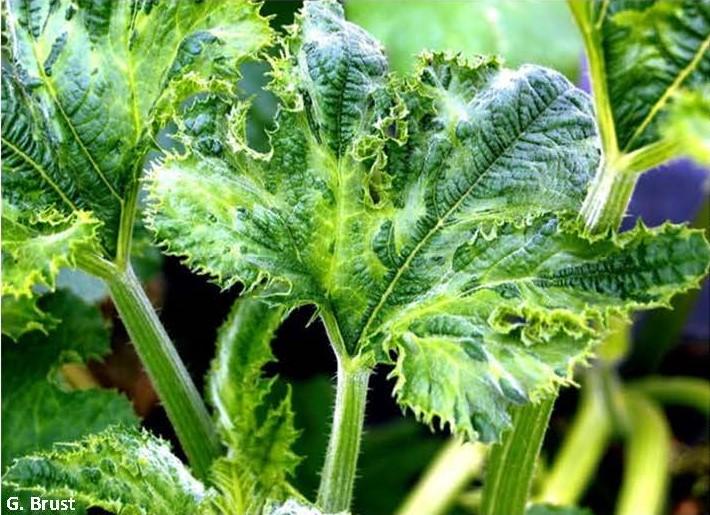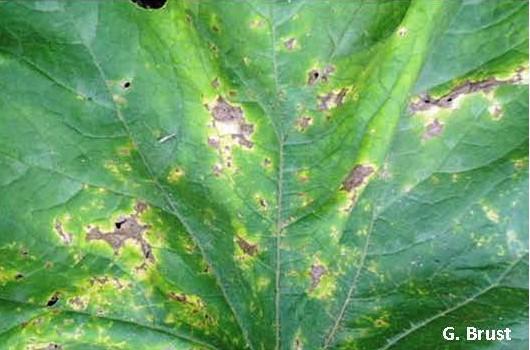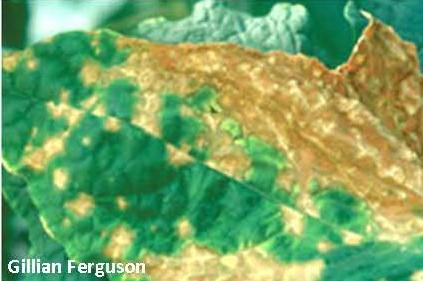When the fungus releases spores into the soil, the virus attaches itself to the outer shell of the spore. Then when the spore germinates and penetrates a healthy root, it transmits the virus into the plant. The virus can also be transmitted to other plants mechanically, such as when plant leaves rub together or during harvest activities. The virus can also be transmitted through infected seed. Symptoms of MNSV begin as tiny, clear, round spots, usually on the youngest leaves. These spots gradually enlarge, becoming brown in the centers (Fig. 2). Eventually, the brown spots expand and coalesce to the point that they resemble a foliar disease such as anthracnose (Figs. 2 and 3).
MNSV has been found on most cucurbits such as watermelon, cantaloupe, squash, pumpkin, and cucumber usually under greenhouse situations. Although found on pumpkin, very little is known about this virus in field production. It was found in about 10% of the pumpkin fields in Oklahoma in 2011. At this point in time we do not think it presents much of a problem, except in certain scenarios. Growers who grow pumpkins (or any cucurbit) in a field on a very short Fig. 1 Potyvirus infection of pumpkin G. Brust 2 rotation (1-2 years) or keep their own seed may have a greater chance for MNSV infection, which may show as viruslike or other odd unexplained foliar symptoms in the field early in the growing season, producing weaker plants and reduced yield. If a grower had a situation like this it would be important for them to take a sample and test it for the presence of viruses. Longer rotations may be warranted if MNSV was found.
Print Article
Return to Vegetable Insect IPM


